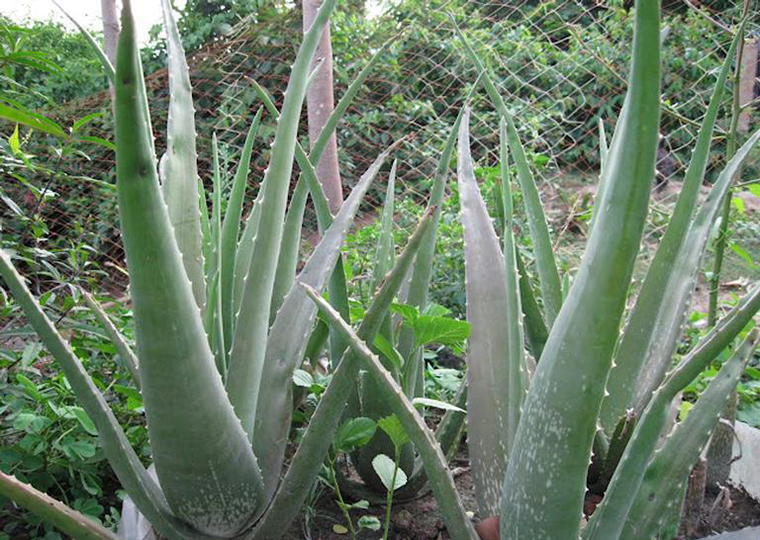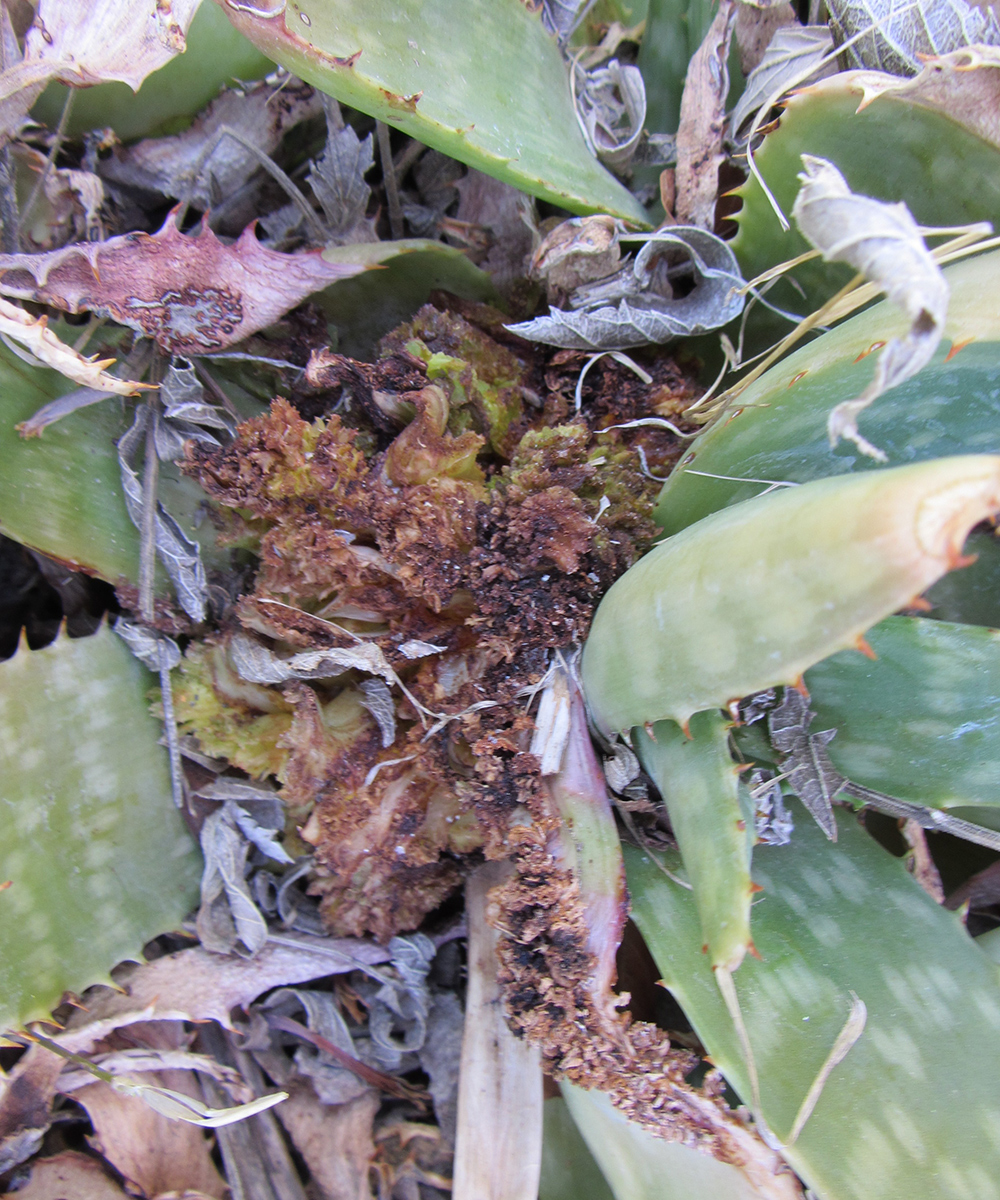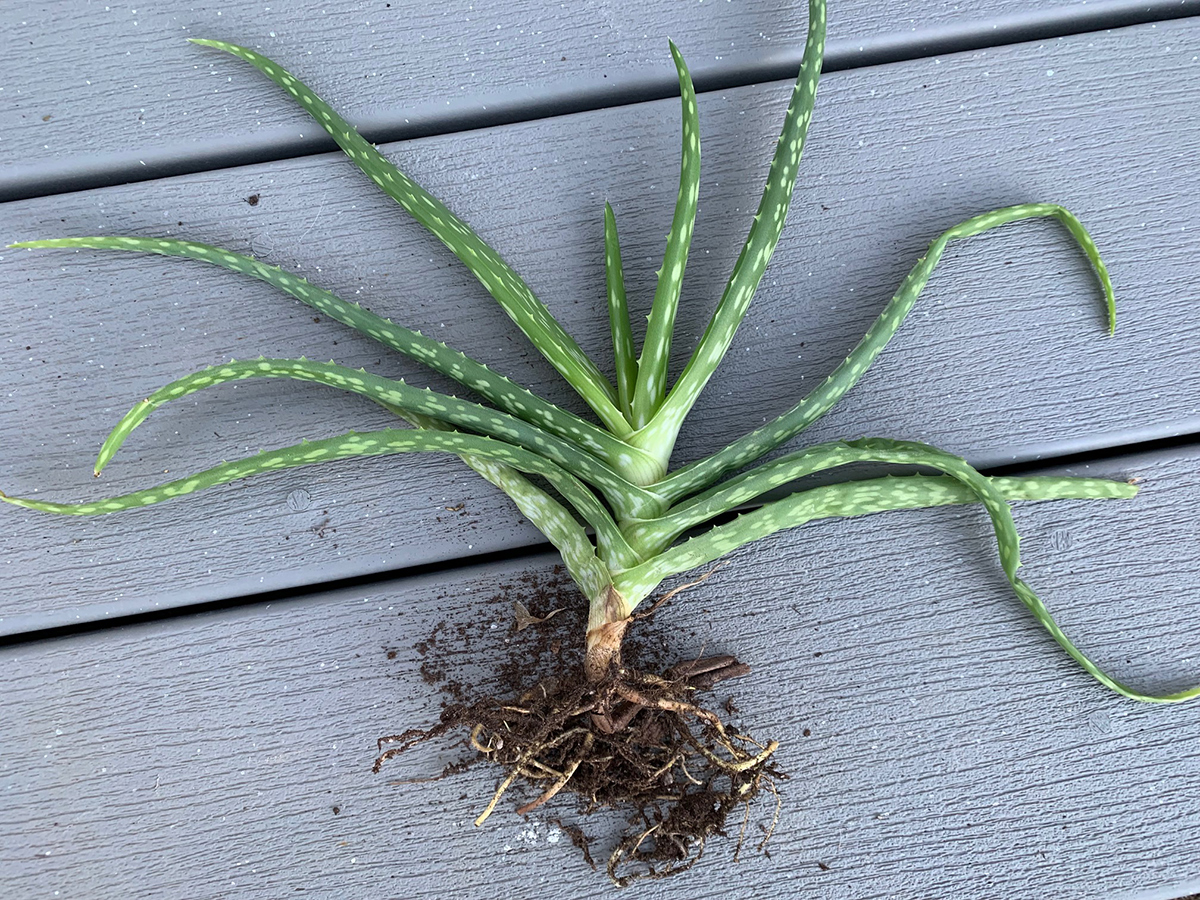Aloe vera (Aloe vera syn. Aloe barbadensis, Zones 10–11) is only one of many species in the Aloe genus. It is likely native to parts of North Africa where conditions are similar to many areas of Southern California. Probably the best-known species due to its medicinal uses for cuts and burns, aloe vera is also frequently used as a natural topical for softening skin and shining hair. But use it cautiously; it contains aloin, which can cause allergic reactions for people sensitive to latex.

Aloe vera thrives in heat and dry conditions, but watch out for aloe mites
This showy performer has wonderful geometric, sculptural leaves, and tall stalks of bright yellow flowers. And like many other aloes, it is easy to grow in our Southern California climate, a trait especially valuable in our shifting and extreme climate. Aloe vera prefers a little more shade than some other species, but it still likes a fair amount of sunshine. It is a succulent, meaning that it has adapted to heat, sun, and dry conditions by storing moisture in its leaves. Because the leaves function as a moisture reserve, aloes can handle water restrictions, and, so long as they’re grown on a slope or in good drainage, they will withstand even the heavy soaking rains when they come our way.

Although aloe vera is tough, mostly pest-free, and easy to grow, there are some parts of Southern California where it (and some other aloes) is infected by aloe mites. These microscopic parasites are carried on the wind, so they can spread widely. Because there is no treatment for this disfiguring disease, it is important to pull out any infected plants, bag them to keep the mites from spreading, and burn or trash them, culling any new outbreaks quickly when seen.
Aloe vera can be grown in the garden and indoors too
For the most part, however, aloe veras are showy garden plants that require little care and are flexible enough to adapt to most landscapes, even during these years of unpredictable weather. They will also grow indoors so long as they are placed in bright sun, but they are less likely to bloom inside.
Plant them in groups for the best textural and color effects. Or pot one up in a decorative container. They will grow about 3 feet tall and 2 feet wide, so give them big pots and use a fast-draining soil. With their clumping habit of growth, they are also excellent for covering slopes, lining passageways, or for single or ‘bouquet’ effects.
New plants are easy to grow from runners, divisions, and cuttings
You don’t have to buy a lot of plants to cover territory. Aloe veras are very easy to propagate. You can typically allow them to propagate themselves. By planting larger outdoor areas with well-spaced plants (that will send out runners), the bare spots will fill in with new colonies within just a few years. Clumps are easily divided and transplanted to new areas too.
Cuttings of whole leaves can be taken with a sharp, clean knife. For taking cuttings—and cropping leaves—it’s best to pull off the stalk collar at the base along with the leaf. Allow the exposed cut to dry for a few days, then place it in a mixture of soil and sand or perlite and do not water until new roots form.

The succulent trait of storing moisture in leaves makes aloes, unlike most other garden plants, more likely to die from too much water rather than too little. In times of drought, aloes can survive low rainfall with their own stored moisture, but they’re more likely to succumb to rot when it’s too wet, particularly in cool temperatures. The most vulnerable area is at the crown between the leaf growth and roots. In addition to looking attractive, using gravel as a top mulch offers more air circulation to reduce crown moisture that can initiate rot.
Aloe vera is just one of many aloes to grow
There are a number of other aloes that decorate Southern Californian gardens. You can create pools of miniatures with stands of easy-care varieties like coral aloe (Aloe striata, Zones 9–11) and even add height with tree aloe (Aloe barberae, syn. Aloe bainesii, Zones 9–11). Both are easy to grow from cuttings.

Whether you are looking for striking plants with sculptural forms and colorful flower spikes, plants that can handle the challenging weather patterns of Southern California, and/or plants that are useful for health care and natural grooming, consider making room for at least a few aloe vera plants—and a few others from this fascinating genus. You might even become enchanted enough to create a whole magical aloe garden with a full assortment of sizes, colors, and textures.
—Jane Gates has more than 35 years of professional experience designing and gardening in Los Angeles and is the author of All the Garden’s a Stage: Choosing the Best Performing Plants for a Sustainable Garden.
